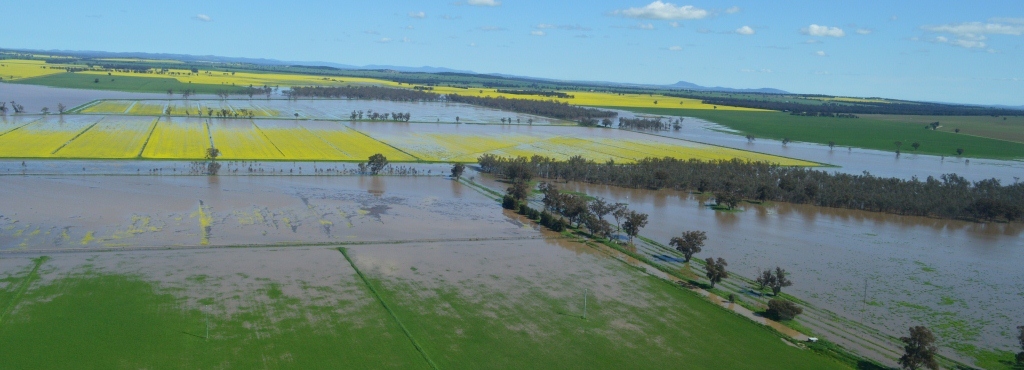Options for flood affected paddocks over summer
Nov 2016
Many farmers have experienced significant loss of pasture and crops due to recent floods.

Questions are now being asked about what can be done with these paddocks over summer prior
to sowing new pasture or crops next autumn.
There are essentially two options farmers can consider with affected paddocks; either
maintaining a fallow prior to sowing next autumn or sowing a summer forage crop. The choice
will depend to some extent on the number and class of livestock on hand for feeding over
summer.
While maintaining a fallow will be appropriate on some paddocks, given the full moisture profile,
there is expected to be significant increases in weed germinations this year with flood water
having carried in weed seed and good moisture conditions providing ample opportunity for their
germination. It is likely that repeated spraying will be required this year to maintain a clean fallow
– the cost of this operation can add up considerably.
It is worthwhile considering summer forage crops on at least some paddocks as these can
provide opportunity for finishing or maintaining livestock over the summer period whilst offering
competition against weeds.
Within the summer forages, millet and forage sorghums are two main options. Millet is a good
option for both sheep and cattle while forage sorghums are better suited to cattle only. Generally,
millet maintains better feed quality (digestibility, protein) than sorghums.
There is a risk of prussic acid poisoning associated with sorghum so it is critical to observe
grazing recommendations. Millet is a safer option than sorghum as it does not contain prussic
acid.
Both millet and sorghum can be grazed or used for silage or haymaking purposes. The stage of
maturity of the plant has a significant impact on quality of the conserved forage.
Presence of residual herbicides can impact on the performance of both millet and sorghum so it
is important to check herbicide application records and check plant-back periods on herbicide
labels prior to sowing.
Recent research by John Piltz at NSW DPI has shown use of summer forage options can add
considerably to livestock production potential over summer and also assist in suppressing
weeds.
“Based on feed analysis of samples from our studies last year, we determined weaner lambs
would be capable of growing at over 150 g/head/day on millet during the vegetative stage of
growth,” said Mr. Piltz.
“In addition, we saw a significant reduction in the amount of witchgrass, a common summer
weed, when millet was grown compared to fallow plots,” Mr Piltz said.
Whether you choose fallow or forage crop options over summer, the essential thing is to control
weeds through this period to set next year’s pasture or crop sowings up for success.
For further information on animal health or flood recovery, please contact your nearest Local
Land Services Office.